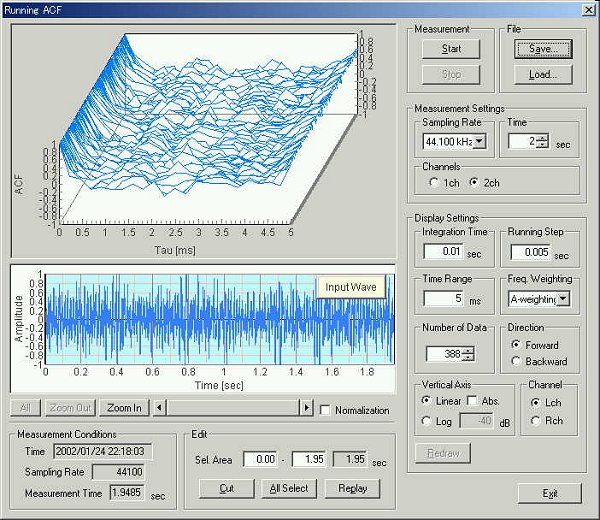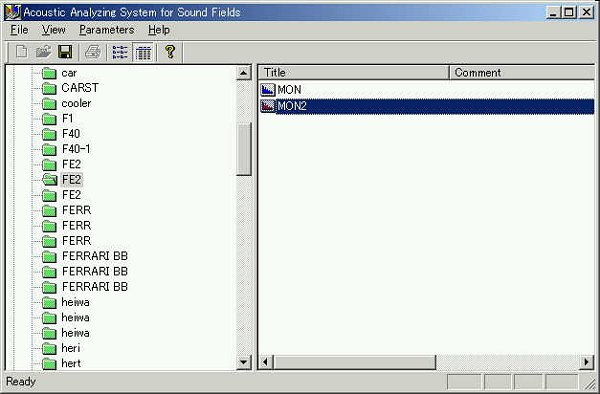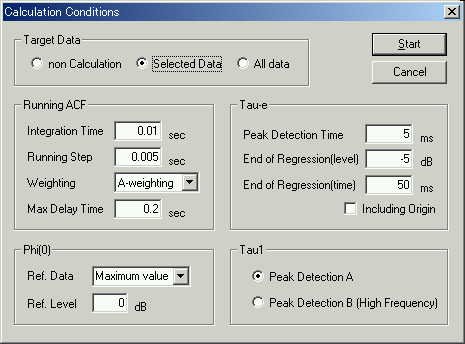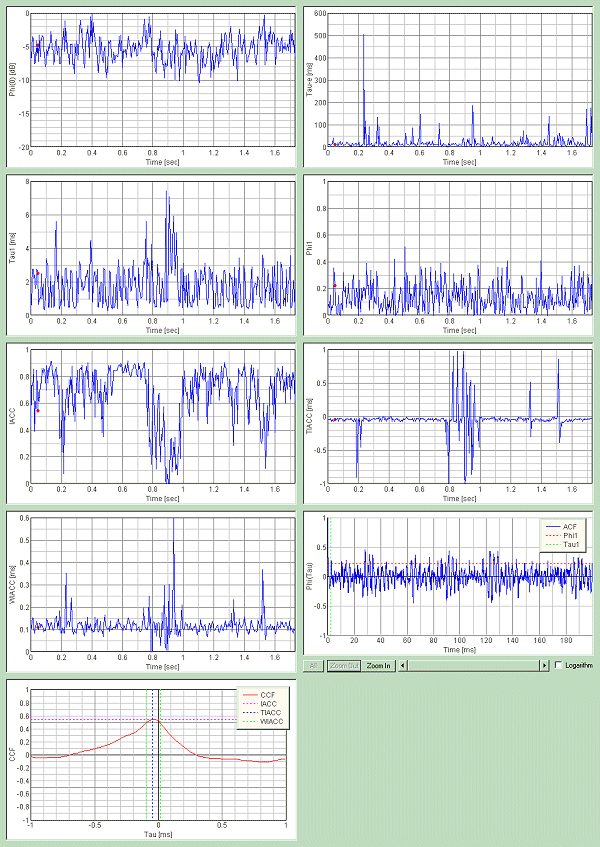| Japanese | English |
In this analysis, the data of the sound for the idling engine is used as before. In the past experiment, the temporal window for the analysis (integration time) was set as 2.0 second. But in that case, the information about the arrival direction was lost because information was integrated for such a long time.
In the present analysis, the integration time is set for 0.01 sec and the analysis step is set for 0.005 sec. In RA, the previous data was edited and saved again. The data used is the first portion (2 seconds) of the engine sound.
![]() ferrari1.wav (44.1kHz / Stereo / 6.1sec / 526KB)
ferrari1.wav (44.1kHz / Stereo / 6.1sec / 526KB)

Load the data on the SA (Sound Analyzer).

This is the calculation condition setup window.

This is the analysis result.

CCF waveforms of which four different t_IACC are shown. Red mark in the time course of t_IACC indicates the point of which CCF is shown.
The first is at 0.2 sec. CCF shows that the sound comes from left.

Second is at 0.4 sec. Sound comes from center. This situation lasts about 0.6 seconds.

Then, the direction of the sound changes abruptly at 0.8 s, like it jumps from left to right.

Later, the sound jumps again. But it is difficult to hear out this change.

If the arrival direction is different, it can be said at least the sounds are generated from different positions. However, a contrary is not always truth. It is not necessarily the same sound source just because it came from the same direction.
We can recognize specific small voice in a crowd. It is called "cocktail party effect". The information about the arrival direction is considered as one of the main cue for this effect. If the analysis of directional information is taken into sound analysis, it may become possible to extract the target sound from surrounding noise, or separate two or more speakers' voices. This would be an indispensable technology for the intelligent sound analysis system.
September 2002 by Masatsugu Sakurai